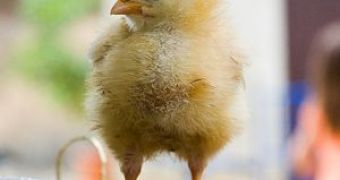Using the latest state of the art supercomputer, British researchers actually found the answer to this timeless question: the chicken! Researchers from Sheffield and Warwick Universities used the High End Computing Terascale Resource (or HECTOR), a supercomputer of the UK Science Research Council, in Edinburgh.
Yes, the question nobody could answer has a scientific response, even if this was not the researcher's original goal. By trying to better understand the forming and the composition of egg shells, Professor Mark Rodger and Dr. David Quigley found that the chicken appeared before the egg did. The discovery was thus a simple accident.
Eggshell is quite interesting because it is a very light yet resistant material, and apparently chicken eggs were chosen because the protein was simple to analyze. In order for humans to be able to one day make something similar, the eggshell's mysteries needed to be uncovered. Scientists entered all the information about the eggshell's composition into the computer and let HECTOR do the work.
After weeks of “computing”, the results were available and so was the answer to this annoying question. Chicken is able to make eggshell thanks to a protein called ovocledidin-17, that can only be found in the chick's ovaries, and that puts microscopic pieces of shell together. This is the first step in the eggshell's formation so the chicken must have come before the egg.
Now the next logical question is where did the chickens came from? Nobody knows where, but scientists says that ancestors that had chicken features (like laying hard eggs) might have appeared at the time of dinosaurs.
This discovery has also more practical consequences, like improving technology. “Understanding how chickens make egg shells is fascinating in itself but can also give clues towards designing new materials and processes,” stated Professor John Harding, a researcher at Sheffield University. “Nature has found innovative solutions that work for all kinds of problems in materials science and technology,” he added. “We can learn a lot from them.”

 14 DAY TRIAL //
14 DAY TRIAL //